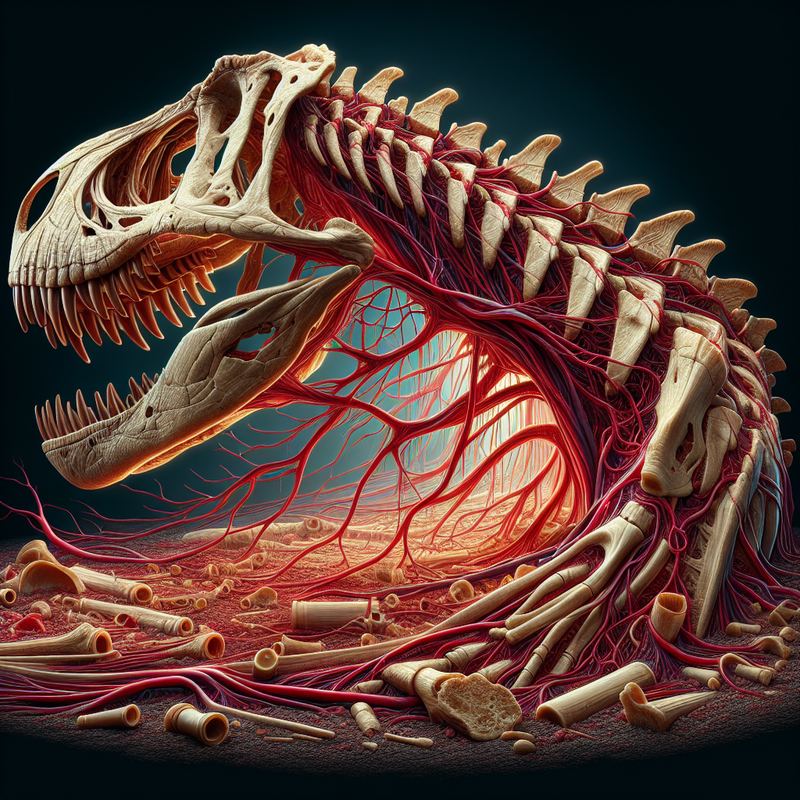Recent paleontological discoveries continue to illuminate the prehistoric era
A notable find pertains to the healing abilities of dinosaurs. In the rib of a massive Tyrannosaurus rex, aptly named “Scotty,” scientists have uncovered preserved blood vessels that are promising to reveal new details about the recuperative processes of these ancient creatures. Scotty, which was found in Canada, remains a source of great interest with its 66-million-year-old secrets.
Insights from the Age of Dinosaurs
Visitors to the Royal Saskatchewan Museum are greeted by an impressive replica of a T. rex skeleton, Scotty, unearthed back in 1991 and believed to have tipped the scales at around 20,000 pounds when alive. More than just a display, the actual remains continue to offer fascinating glimpses into Scotty’s life during the Cretaceous, shedding light on its recovery from numerous injuries.
Jerit Mitchell made the intriguing discovery of the blood vessels in 2019 while examining Scotty’s rib. “Typically, fossils preserve just the more durable structures—bones or teeth,” Mitchell told CBC News’ Adam Hunter. “But occasionally, we get the rare preservation of soft tissues, giving us a more comprehensive picture of dinosaurs’ lives eons ago.”
Equipped with synchrotron X-ray imaging for a minimally invasive examination, Mitchell and his team were able to delve into the fossilized rib and its internal tissues. Published in Scientific Reports, their study shows that Scotty was in the midst of healing a cracked rib, perhaps due to a tussle with another dinosaur—a theory supported by similar evidence of conflict in other adult male T. rex fossils over territory or breeding rights.
The healing had not completed by the time of Scotty’s death only months later, providing a rare chance to analyze the blood vessels. Study co-author Mauricio Barbi, a physicist at the University of Regina, pointed out that the discovery of blood vessel structures within Scotty’s rib is associated with bone regrowth areas that had a surge in blood supply during the mend.
With their innovative approach, the researchers plan to apply similar techniques to other dinosaur remains from the Cretaceous. A broader set of samples could lead to comparisons with the recuperative capabilities of living species today, potentially enriching our understanding of the evolutionary journey of life on our planet.
As paleontology advances through technology, the capacity to decipher the enigmas entombed in fossil remains grows. The research being done with Scotty’s remains is a testament to the wealth of knowledge that can still be gleaned from our planet’s long-gone residents.
















